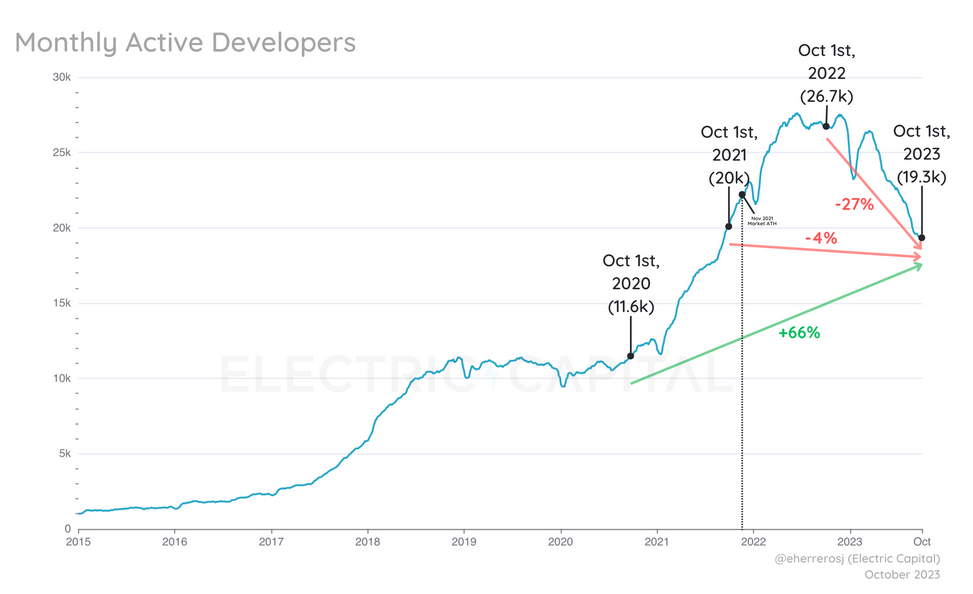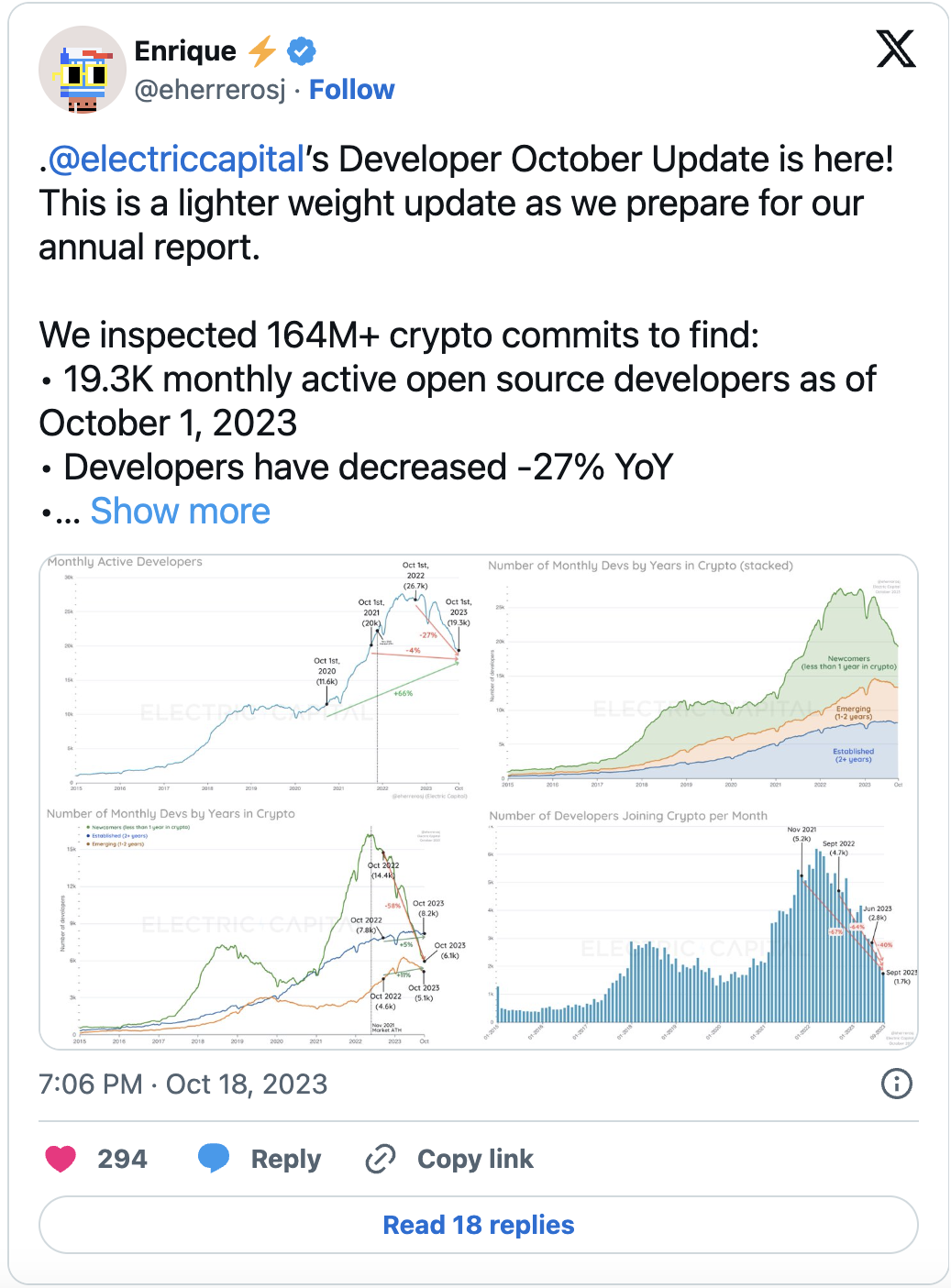Declining Interest in Web3 Ecosystems
Recent market downturns in the cryptocurrency space have taken a toll on Web3 ecosystems. However, amidst the decreasing user interest, one data point has managed to stand out. According to the data, Starknet and zkSync, two Ethereum Layer-2 ecosystems, have been among the few platforms that have seen an increase in their total monthly active developers over the past 12 months.
According to a developer report that provides data until October 1st, Starknet has experienced a 3% increase in total active developers, while zkSync has seen a 6% increase.
During this time period, Ethereum has witnessed a 23% decline, Polygon has experienced a 43% decline, and Solana has seen a significant 57% drop. In the blockchain ecosystem as a whole, the total monthly active developer count has decreased from 26,701 to 19,279, marking a 27.7% decline.
Chainlink, Stellar, Aztec Protocol, and Ripple have all seen an increase in developer counts as of October 1st. However, their total monthly active developer counts remain lower than those of zkSync and Starknet. One development that sets Starknet, a project by StarkWare, and zkSync, a project by Matter Labs, apart is that both projects are zero-knowledge initiatives.

Why zkSync and Starknet Stand Out?
Starknet has recently been focused on the “Quantum Leap” feature, which was introduced to users in July. Theoretically, this project allows for an increase in transactions per second (TPS) on the Ethereum ecosystem from approximately 13-15 TPS to 37 TPS, and in some cases, even up to 90 TPS.
Furthermore, both Starknet and zkSync are working on zero-knowledge Ethereum Virtual Machine (zkEVM) solutions to further scale the Ethereum infrastructure in 2023. Developers within the zkSync ecosystem are also building a “hyper-chain” network, consisting of collaborative protocols and sovereign chains, as part of this project. The company presented this solution to the public in June and aims to have an efficient version by the end of 2023.
Enrique Herreros, a software engineer at Electric Capital, mentioned in a recent tweet on October 18th that the majority of active monthly developers leaving these ecosystems are fewer in number than new incoming developers.


 Türkçe
Türkçe Español
Español









